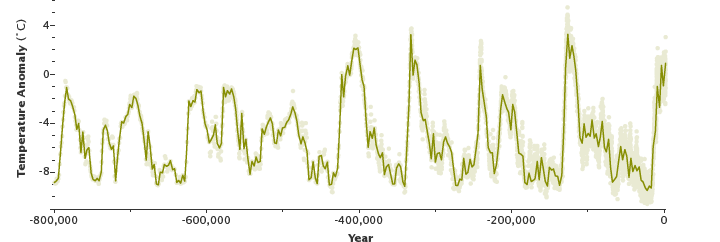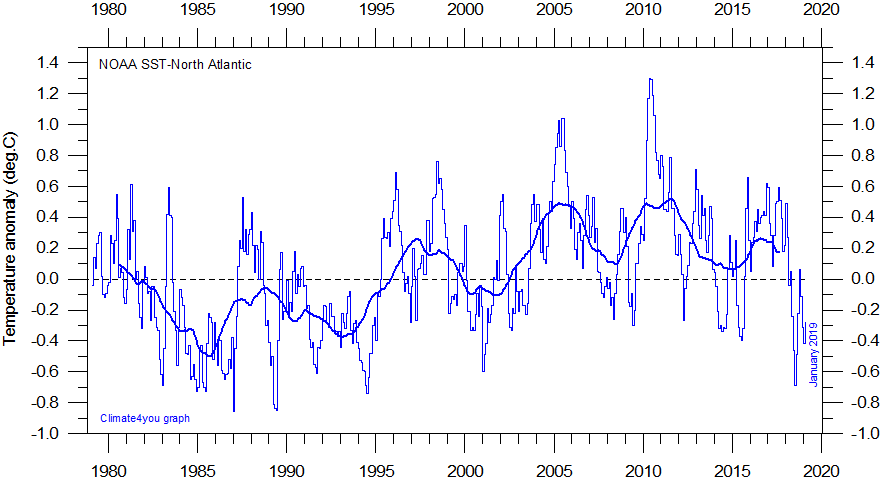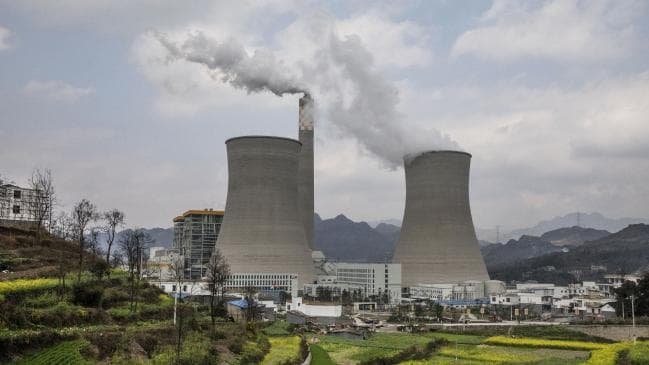Kiwi accent coming through?
The NZ pupulation of France are suffering espishully
Typical hysterical email from a climate alarmist. When it’s hot it’s the climate and when not it’s the weather. I noted you did not highlight Melbourne had it’s coldest day since 1985 last week.
Anyway, looking at the chart, one (outside of the loonies here) would anticipate that it will be warm and probably warmer for hundreds/thousands of years moving forward. A perfect opportunity to push the warmist ideology.
I don’t think a graph that covers 800,000 years is going to be very good at showing any alarming increase in 80 years.
Assuming it’s in any way accurate, which I don’t.
Seriously? HM went to extraordinary lengths putting together several detailed responses to the article bomber1480 posted & you championed. And your best response is a chart with no context and puerile name-calling. You really should put up or farkk off.
Slightly earlier than I expected
Or link to where it was sourced so we could get more information about the data set used
Or you could just ignore the prick, and never read any of his posts ever again.
I haven’t read any for a year.
It’s easy, just look who posted, and scroll by or click out. Simple!
Try it, … you’ll like it.
You only need two people to flag it and it disappears.
The outrage over censorship would be worth it.
It looks like the temperature history from the ice cores.
Not sure what werewolf is hoping it proves. After all no one is arguing against the idea that the temperature has varied in the past. Just that it is a bit silly to ignore our impact as a new factor.
I vote for the latter.
Where is that graph from?
It’s not the one where year “0” is 1950, is it?? ie, 69 years ago…
Is it irony or simply apt that you post a graph without context to re-confirm that you’re a caricature?
Any chance you might respond to HM’s detailed multi-post analysis of the article you posted?
getting in here before the other trogs share it from their favourite Rupert rag.
The fact is that our earth has ice in its veins
While nations such as China dominate global emissions and are increasing them, ‘nations such as Australia and New Zealand need not panic over the use of fossil fuels’. Picture: Getty Images
- By DAVID SHELLEY
- 6:25AM JULY 8, 2019
- 653 COMMENTS
Climate change is a defining issue of our time, especially for young people who are persuaded that we are doomed unless urgent action is taken on carbon emissions. Activists, with some success, are demanding climate emergencies be declared around the world, making those demands on the basis that temperatures are at record highs, glaciers and sea ice are melting at unprecedented rates, and sea levels rising dangerously.
A cursory examination of the geological literature shows that the first two assertions are simply not true, and that rising sea levels are par for the course.
To assert that today’s temperatures are record highs is mischief-making of the highest order. Earth has been much hotter (up to 10C hotter) for the vast majority of geological time. Jurassic Park was very hot, and when the dinosaurs suddenly died out 65 million years ago, the succeeding age of mammals was similarly very hot. The last million years (a mere heartbeat on the geological time-scale) has been atypically cold, with extraordinarily large fluctuations in temperature. This period can be described as a series of 100,000-year-long cycles of dangerously cold ice ages (10C colder than today) and warm interglacials (where we are now). The interglacials are relatively short, usually a few thousand years, and we are already 12,000 years or so into this one. The record would suggest we might soon descend into another dangerously cold glaciation.
READ NEXT
WISH
MILANDA ROUT
Geologists know temperatures were higher than they are today during the Holocene maximum, 5000 to 9000 years ago in our current interglacial, and higher (by at least 2 C) in two of the last three interglacial periods. Sea levels are rising, but just 12,000 years ago, at the end of the last glaciation, sea levels were as much as 140m lower than today, and they then rose dramatically as we entered this interglacial. Sea levels were significantly higher than today just a very short time ago.
Sea levels were also significantly higher in the last interglacial 125,000 years ago; Florida Keys, for example, is the remains of a coral reef that grew then.
The really major ice melt was during the transition from the last glaciation to today. Canada was covered entirely by a massive sheet of ice with no vegetation and New Zealand’s South Island lakes were 1km-thick glaciers — so today’s reductions in sea ice and glacier volumes are quite trivial.
This is proved by the modern-day retreat of glaciers which is exhuming the remains of forests that existed just a few thousand years ago in Alaska and Europe.
Alarmists assert that despite all that, CO2 is a greenhouse gas and we are pumping large quantities of it into the atmosphere, causing catastrophic warming. But the Intergovernmental Panel on Climate Change does not know how potent CO2 is as a greenhouse gas, and gives a possible range for climate sensitivity of one to six. If climate sensitivity is low (close to one) then our emissions will never dangerously warm Earth. Climate sensitivity due to CO2 alone is actually just one, but climate scientists add all sorts of uncertain feedback effects to make it higher.
Milankovitch Cycles are the favoured explanation for the recent cycles of ice ages and interglacial periods, thus making the sun the main driver of temperature change. But other factors are certainly involved, because climate is an incredibly complex system, and on the geological time scale, processes such as plate tectonics, volcanism and impacts from extraterrestrial bodies play significant roles.
Let us agree that the sun drove the 10C ups and downs in temperature between glaciations and interglacials, and let us acknowledge that the modern satellite record of temperatures shows global temperatures regularly going up and down by as much as 1C on a timescale of three to 10 years (probably due to oceanic influences such as El Nino). We know, too, that temperatures over the past 9000 years have varied up and down by almost 2C. Not one of those changes can be blamed on our carbon emissions. In the context of these natural changes, why is the small warming of about 1C in the 20th century regarded as extraordinary and alarming?
The IPCC stated quite clearly that: “In climate research and modelling, we should recognise that we are dealing with a coupled nonlinear chaotic system, and therefore that the long-term prediction of future climate states is not possible.” Why is it then that people believe the so-called IPCC projections of future climate change to be valid, when even the IPCC says it can’t make valid predictions?
It is an indictment of our education system that students are convinced today’s climate change is extraordinary when it falls well within the bounds of natural climate change. They should be told, too, that we do not know how potent CO2 is as a greenhouse gas.
All this is not to say that there is nothing to be alarmed about. Humans have changed and often overwhelmed the environment (most living things try to do exactly the same, but are restrained by some form of dynamic equilibrium). If we want our civilisation to survive, it is imperative that we manage finite resources (including fossil fuels) more carefully.
Most politicians talk in terms of a few years’ time, or of caring for our children’s or grandchildren’s generation, but I’d prefer to think we can stay around a little longer than that. Human civilisation as we know it has been around perhaps 10,000 years, so let’s start by making sure we can survive for at least another 10,000 years. And why not a million years or more?
Which means we must stop polluting the oceans, stop overfishing, find more sustainable sources of electricity and control population growth. Given the present reality that large nations such as China dominate global emissions and are increasing them, nations such as Australia and New Zealand need not panic over the use of fossil fuels. Nuclear energy may be a short-term option for Australia, but surviving for another million years will certainly require new solutions and technology.
I suggest to the activists that the clarion call for action should be “managing the environment and sustainability”, not “stopping climate change”.
The very idea that we can stop climate change is barking mad. Climate change is inevitable, as geology has always shown.
David Shelley lectured in geology at New Zealand’s University of Canterbury.
Anyone with half a brain, knows that climate change is both inevitable AND influenced by human activity.
sorry, not asking you to pull this one apart, I thought it was obvious what’s wrong with it. Before the fact that its posted in The Australian being the first flag.
I always find it entertaining when a geologist goes into the “its been like this before, I can see it in rocks” argument about why people shouldn’t worry about climate change.
and you can then immediately get them on the back foot by going “sure, when it was like that, was there…man?”
also, when did co2 ppm raise this rapidly?
A geologist would have no conflict of interest when discussing climate change ; well except I suppose that most of his money comes from Mining Companies




